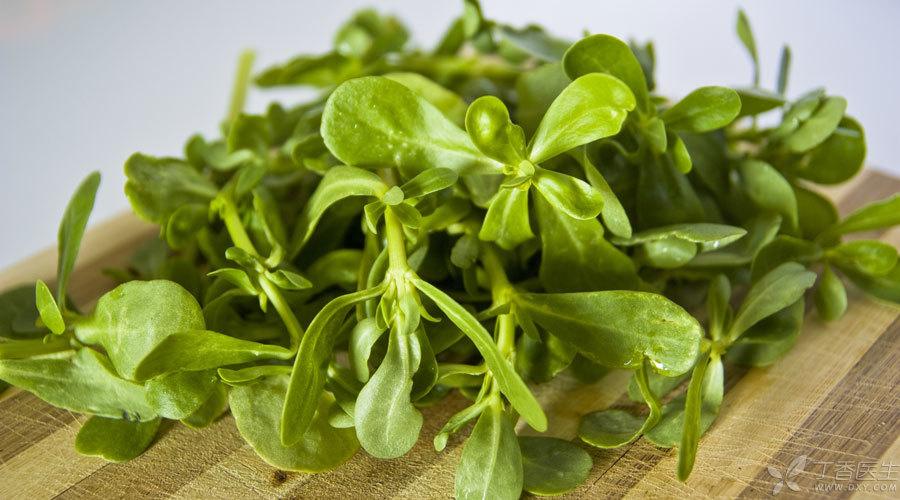
Wild vegetables, usually the tender buds of various grass leaves or trees, belong to the large family of green leafy vegetables.
Compared with cultivated vegetables, especially fruits and melons, wild vegetables do have some advantages in nutrition, such as protein, vitamin C, calcium and other nutrients are more abundant.
But… Dr. Clove wants to remind you:
Although wild vegetables are good, they can really have an accident if they are not eaten correctly.
Be careful when eating bracken
As a traditional ingredient, bracken with crisp and tender taste is one of the most popular wild vegetables in spring.
Unfortunately, as a green leafy vegetable, bracken has been proved to increase the risk of cancer and belongs to Class 2B carcinogen (which may cause cancer to human beings).
This is not a rumor.
The main culprit is a substance called [protopterin]. It exists in ferns, especially in the tender buds, which is the bracken we often eat, and has the highest content.
However, don’t rush to throw away the bracken you just bought.
Reasonable cooking can effectively reduce the content of the original fern glycoside and reduce the harm.
As long as you don’t eat a lot for a long time, it’s no problem to try something fresh occasionally.
Don’t pick wild vegetables on the roadside.
Data released by the State Health and Planning Commission show that in 2015, a total of 1,045 people across the country were poisoned by eating poisonous animals, plants and mushrooms, and 89 people died, mainly due to accidental eating.
It can be seen that [natural] wild vegetables are not so safe.
On the one hand, the appearance of many poisonous plants is very similar to that of edible wild vegetables, and inability to distinguish them during picking is likely to lead to accidental poisoning.
On the other hand, many wild vegetables have poor growth conditions, such as automobile exhaust, water from gutters, pesticides just beaten in orchards… Such wild vegetables cannot be called [pollution-free].
At ordinary times, I am afraid of pollution every day. Why is I especially kind to wild vegetables?
Based on the principle of safety first, Dr. Clove suggested that it is best to do:
- Don’t pick or buy wild vegetables that you don’t know or know, don’t [look like]. Picking places should be selected to avoid mess. Try to choose large farmers’ markets or supermarkets, and don’t buy them at roadside mobile stalls.
Wild vegetables are not [natural medicine]
In the early years, wild vegetables were synonymous with lack of clothes and food. They were even used to feed cattle and raise chickens. It was difficult to get into the hall of elegance.
However, in recent years, they have turned over and become representatives of [health], especially some bitter wild vegetables, which have even been promoted as natural drugs.
In fact, the astringent and bitter taste of wild vegetables usually comes from fiber, oxalic acid, and some alkaloids.
These substances bring unique flavor to wild vegetables, but they also affect the absorption of some nutrients and even have slight toxicity.
Wild vegetables have been only [wild vegetables] for thousands of years, and have not been upgraded to common vegetables or medicinal materials, which shows that they are not perfect and have no magic effect of what.
If you like it, you can take advantage of the season to taste it. If you don’t like it, you don’t need to force yourself.

Do what people want to eat less wild vegetables?
Wild vegetables cannot be used as medicine, but they are a good vegetable choice.
However, some people may feel uncomfortable after eating wild vegetables.
Light cases cause digestive system abnormalities and affect nutrition absorption. Serious cases may cause acute and chronic poisoning.
Therefore, it is suggested that the following people eat as little or as carefully as possible wild vegetables:
- People with poor digestion and absorption ability. People who are weak and malnourished. Women in pregnancy and lactation. People with a history of wild vegetable allergy.
How is it best cooked?
Reasonable cooking is an important step to reduce the risk of wild vegetables, and the most effective way to remove oxalic acid, alkaloids and other substances is:
Blanch.
To give a few examples:
This is the best way for bracken.
Isn’t that scary? Don’t worry, the risk will be lower if it is handled properly.
-
Wash bracken, yard it in a pan, and add 1% baking soda powder by weight.
-
Pour in boiling water to submerge the bracken, cover it and stew it.
-
After cooling, add a lot of water to continue cleaning, and you can eat after washing.
Too much trouble? You can buy the processed ones directly.

Don’t be lazy in handling Toona sinensis.
Toona sinensis contains more nitrate and is easy to rot, producing a large amount of nitrite. So…
-
Buy something fresh and free of rotten leaves.
-
Refrigerate in the refrigerator and eat as soon as possible.
-
After cleaning, blanch the water before cooking.
As for Houttuynia cordata……
Seeing these three words, I feel full of flavor. I really love to death and hate to death.
Houttuynia cordata Thunb is usually mixed cold and stir-fried, so careful cleaning is the key processing step, and don’t rush it casually.
As for other common wild vegetables, such as shepherd’s purse, alfalfa, purslane, dandelion, etc., the same is true:
Blanch if you can.
Finally, Dr. Clove reminded him that if he felt unwell, he must see a doctor as soon as possible.
